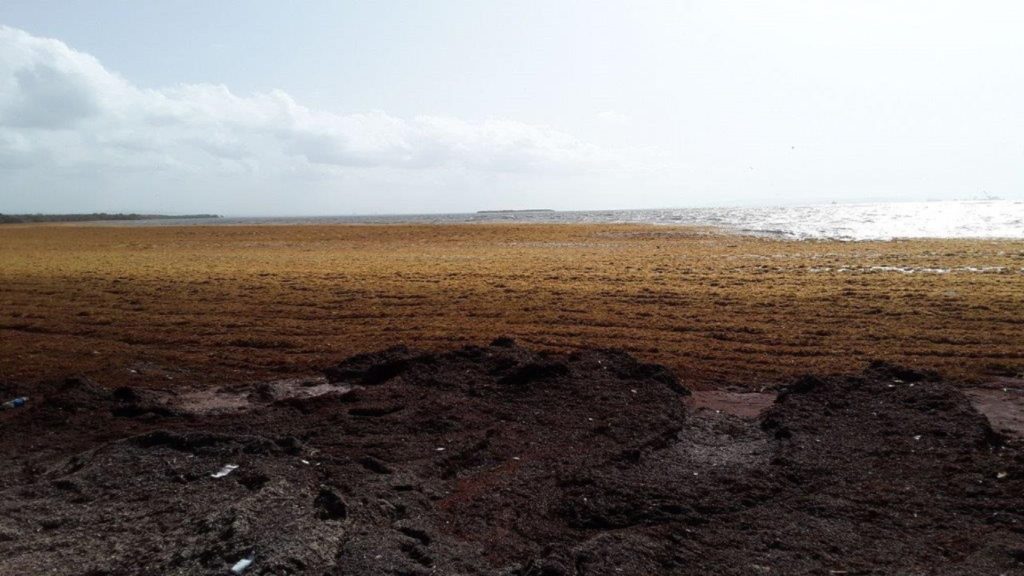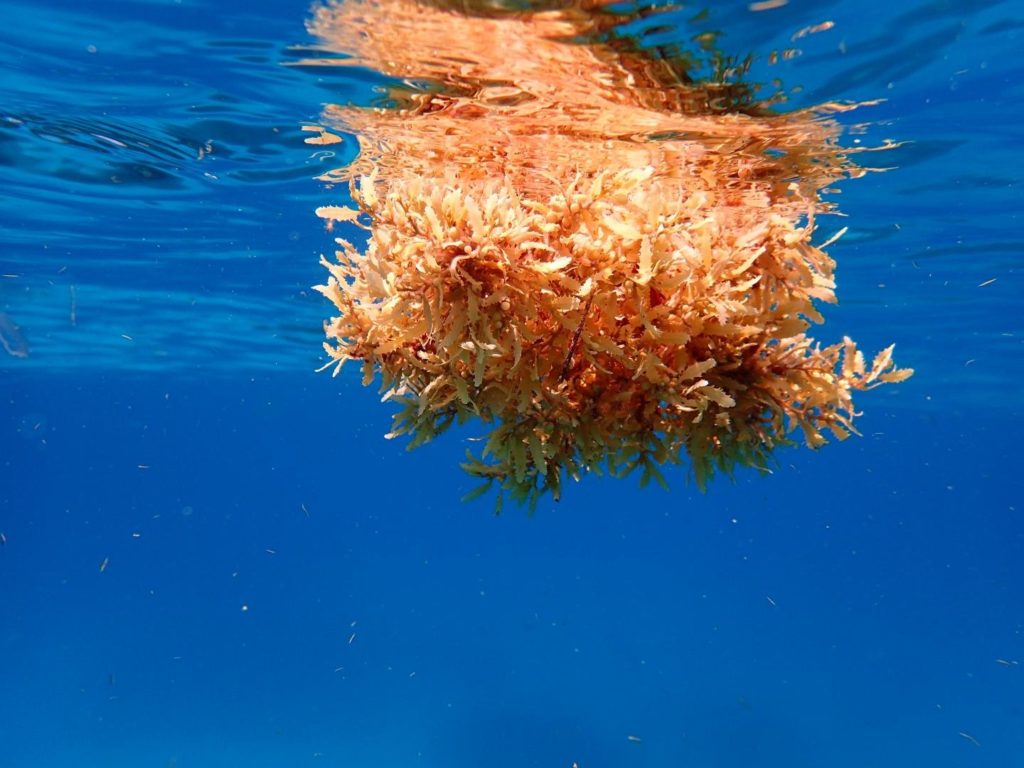

Amid a ‘bloom’ of Sargassum seaweed in Jamaica, the National Environment and Planning Agency (NEPA) is reminding beach operators and other tourist interests that while it encourages such practises, cleaning protocols must be maintained.
NEPA, responding to queries by Our Today in an email, added that its offices must be notified before starting any removal/cleaning activity, as beach operators need to get the requisite approval for heavy machinery.
“Due care must be taken in sargassum removal. [NEPA] further wishes to advise beach operators that should the need arise for the use of heavy equipment such as tractors and front-end loaders for the removal of Sargassum and other accumulated debris, permission should be sought from the agency prior to carrying out the activity,” NEPA explained.
To this end, the entity disclosed that structured guidelines for the collection and removal of Sargassum seaweed on Jamaican shores have already been established by the Government.
This ‘Sargassum protocol’, applicable to hotel/resort owners, beach operators and fishing groups, is detailed as follows:
Removal
- Removal of Sargassum should be carried out manually through non-intrusive methods such as hand raking or beach raking equipment with a perforated conveyor belt. The use of heavy equipment and machinery is prohibited.
- After raking, the accumulated sand should be returned to the beach.
- Should the need arise for the use of heavy equipment such as tractors and front-end loaders to remove the Sargassum, operators should seek NEPA’s written permission before attempting this methodology.
Disposal
- Stockpiling of Sargassum seaweed should be confined to a designated location.
- The material should be turned occasionally to encourage its drying and the ultimate removal of sand.
- All organic material should be disposed of at an appropriate off-site location or buried on the beach where practical.
NEPA said that Sargassum seaweed, which is not endemic to the region, was first documented in the Eastern Caribbean in 2011. Another influx of the invasive algae appeared in sections of the Caribbean in 2014 and again in 2015.

According to the environment watchdog, 2015 is a significant year for Jamaica as Sargassum landings were first observed locally.
The parishes of Clarendon, St Catherine, St Thomas, Portland, St Mary, St Ann, Trelawny and St James have since been particularly affected by ‘blooms’ of Sargassum, which waves wash onto shorelines.
While Sargassum has proved to be a nuisance for beach lovers and ocean enthusiasts, the seaweed does provide refuge for migratory species and serves as an essential habitat for many species of fish and invertebrates. The free-floating algae will not attach to the ocean floor as its movements depend solely on ocean currents.
In addition, NEPA informed that Sargassum acts as a critical nursery habitat providing shelter and food for endangered species such as sea turtles and commercially important fish species such as tuna.
In a manageable form, it also plays a role in beach nourishment and is a crucial contributor in shoreline stability.
As the phenomenon does not appear to be leaving the Caribbean anytime soon, regional scientists are hard at work trying to better understand Sargassum.
NEPA told Our Today that several neighbouring countries are already utilising applications of Sargassum in creative ways.
“In other parts of the Caribbean, Sargassum is used as animal feed, food for humans, in cosmetics, the manufacture of take-away containers for food and in bricks for construction,” the agency attested.
NEPA has since partnered with a multidisciplinary team from the Faculty of Science and Technology at the University of the West Indies (UWI) Mona campus.

Through the partnership, the team has been conducting research ranging from forecasting Sargassum landings onshore, to the use of the seaweed in soil conditioning and as fertilizer.
“Thus far, the results from [Sargassum] use as compost on crops such as corn shows promise. In addition, the research is investigating the extraction of potentially bioactive compounds and other valuable substances, as well as the seaweed’s potential use in the generation of energy in bio-digesters,” NEPA noted.
NEPA was unable to state whether Sargassum posed any direct health risks to humans who became exposed, and suggested getting further feedback from the Ministry of Health and Wellness.







Comments